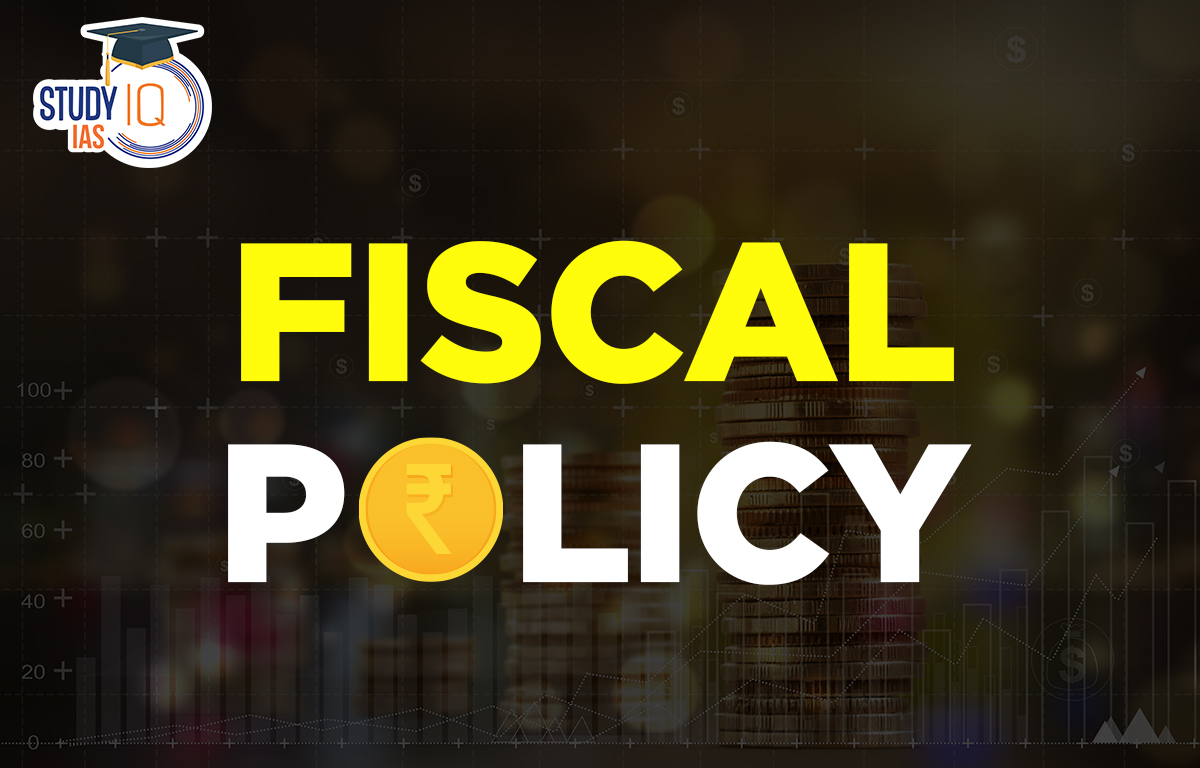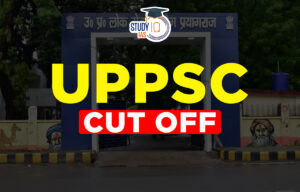Table of Contents
Fiscal Policy Meaning
Fiscal Policy refers to the use of government spending and tax policies to affect macroeconomic conditions, particularly employment, inflation, and macroeconomic variables such as aggregate demand for goods and services. These actions are primarily intended to stabilize the economy. To accomplish these macroeconomic objectives, fiscal and monetary policy actions are usually combined.
Everything relating to the government’s income and expenditures is covered under Fiscal Policy. The most significant aspects of the economy are addressed through fiscal policy measures, which range from budgeting to taxation. The three components of fiscal policy in India are as follows. Public Debt, Government Expenditures, and Government Revenues. The Ministry of Finance establishes the fiscal policy with support from NITI Ayog.
Who formulates Fiscal Policy in India?
The Indian Ministry of Finance develops the country’s fiscal policy. In 2003, this policy was put into effect. Fiscal policy is becoming more significant today, and economic stability is the basic foundation on which the country’s progress is based. Fast and quick economic growth is the primary goal of India’s fiscal strategy. Monetary policy, together with fiscal policy, is crucial to controlling the nation’s economy.
Read about: RBI Governors of India
Fiscal Policy Objectives
1. Price Stability
This policy primarily controls the absolute regulation of prices for all goods or things. It regulates prices while the nation is through an economic crisis and keeps them steady during an inflationary time; as a result, it regulates prices throughout the nation.
By regulating the supply of essential goods and services, the government supports price stability. As a result, it invests money in rationing and stores with reasonable prices and a sufficient supply of food grains. Additionally, it provides subsidies for utilities like transportation, water, and cooking gas, keeping their prices low enough for regular people to afford.
2. Complete Employment
Employment should be the top priority in every nation that needs to better its economic situation. India has the highest number of young people, which increases the likelihood of development. The younger generation is more capable than the older generation in several areas. Therefore, if our nation could offer full or almost full employment, it would elevate our economic statistics to the next level. The Fiscal policy guides all choices pertaining to employment. The government creates more job opportunities in a number of different ways.
One, it produces jobs when it builds public sector businesses. Two, it provides the private sector with incentives and other benefits, such as tax breaks, lower tax rates, and so on, to increase output and employment. Additionally, it promotes people to launch small, cottage, and rural businesses in order to provide employment. Giving them tax benefits, incentives, subsidies, and low-interest loans are a few ways to do this.
Read More: Monetary Policy
3. Economic Growth
Specific fiscal policy initiatives can boost the nation’s growth rate and aid in meeting its needs. The establishment of heavy industries like steel, chemicals, fertilisers, and industrial machinery is one way the government promotes economic growth. It also builds infrastructures that support economic development, including roads, bridges, railways, schools, hospitals, water and electricity supplies, telecommunications, and so forth.
Read about: Finance Ministers of India List
Fiscal Policy Types
1. Expansionary Fiscal Policy
These entail the choices made by the governments to increase their financial contributions to the national economy. Thus, it produces a large number of goods and services. Additionally, it expands employment prospects, increasing both individual and governmental profits as a result of all the growth.
2. Contractionary Fiscal Policy
The second kind of fiscal policy is this one. When there is an economic boom, this is employed. The rapid economic expansion can occasionally be risky, though. The government is attempting to halt the current economic boom in this instance. Both inflation and economic growth are controlled by this, which also aids in doing so.
3. Neutral Fiscal Policy
When the country’s economy is in balance, this fiscal policy is employed. With economic highs and lows, it suggests things are moving well. It covers expenditures made by the governments that are paid for through taxes levied against citizens, businesses, or sectors of the economy. and won’t have any impact on the nation’s economic situation.
Read about: 42nd Amendment of Indian Constitution
Fiscal Policy Instruments
1. Control Over Consumption
This is the method by which the nation’s savings are increased. Consequently, it can be used to acquire things later on and improve the nation’s current economic situation.
2. By increasing the rate of investment
This may be the best course of action to improve both the current and future state of the economy. When people invest, money is not wasted on unnecessary items; instead, it is put to good use, rising in value every day. Consequently, the nation’s economic situation will improve greatly in the future.
3. Infrastructure Development
The infrastructure of a country has a significant role in deciding whether it is considered to be developed or underdeveloped. Thus, if we want to improve the economy, infrastructure development is more crucial.
4. Maximum taxes on Overseas products and Luxury Products
There are approximately 100% taxes involved in some goods that are directly imported into India from other nations. Because of this, the nation gains the most from its revenue. Additionally, it will encourage the purchase of homegrown goods, which will advance the nation’s industries.
Aside from overcharging for some items based on their quality and other elements, there are other crucial considerations to consider. The biggest reason why the price of a product has grown is the enormous tax that the government has imposed on luxury goods. Because this significant tax is applied to luxury goods, the income earned by these products will be at its highest, directly affecting the economic health of the nation.
Read about: Important Schemes of Indian Government
Fiscal Policy Components
- Government Receipts
- Government Expenditures
- Public Accounts of India
1. Government Receipts
These government receipts take into account the government’s income, which has been achieved through the collection of taxes, interest, and the revenue produced by investments, cess, and other forms of revenue the nation has generated. This represents the total funding received by the government from all sources.
There are two types for government receipts. Income Receipts Any government payment that neither increases liabilities nor decreases assets is referred to as a revenue receipt. Revenues from taxes and other sources can also be separated out from this. The interests and dividends earned on government investments, as well as cess and some other receipts, constitute non-tax revenues. Direct tax and indirect tax make up the two categories of tax revenues.
Capital Receipts
All government payments that increase liabilities or decrease assets are considered capital receipts. These funds are used by the governments to run smoothly. Another kind of capital receipt is the existence of an incoming cash flow. It is known as a debt receipt if the government borrows money since the money must be repaid to the government from whom it was borrowed.
Non-debt receipts are those payments that do not require repayment. Non-debt receipts make up around 75% of all budgets. Loans taken by the general public, some foreign governments, and the Reserve Bank of India make up the majority of capital receipts.
Revenue Receipts
Non-debt receipts are those payments that do not require repayment. Non-debt receipts make up around 75% of all budgets. Loans taken by the general people, some foreign governments, and the Reserve Bank of India make up the majority of capital receipts (RBI).
2. Government Expenditure
Revenue expenditures
They are one-time costs that are incurred now or usually within a year. Revenue expenditures are essentially the same as operating expenses since they cover the charges necessary to cover the government’s continuing operational costs (OPEX). regular costs for upkeep and repairs on state-owned property. Unlike most capital expenditures, which are one-time costs, they are ongoing expenses. An illustration would be paying for electricity, rent, employee salaries, and government-owned property taxes.
Capital Expenditure
Investments made by the government in capital to run or grow its operations and bring in more money. Purchasing long-term assets, such as equipment, and purchasing fixed assets, which are tangible assets. Therefore, compared to revenue expenditures, capital expenditures are frequently for bigger sums. An illustration would be the acquisition of manufacturing equipment, commercial purchases, other government expenditures like furniture, infrastructure investment, etc.
3. Public Accounts of India (Public Debt)
When the government is only acting as a banker in a transaction, the Public Account of India records the flows for those transactions. According to Article 266(2) of the Constitution, this fund was established. It takes into consideration flows for transactions in which the government only serves as a banker. Examples include minor savings, provident funds, etc. This money doesn’t belong to the government; instead, they must be returned to their original owners at some point. Consequently, the Parliament is not required to authorize spending from the public account.
Instruments of Fiscal Policy
The objectives mentioned above are met in the following ways Public Expenditure, Taxation, Public Borrowing which includes price control, wages, and production
All the objectives are explained in detail below.
Control over consumption
This is the method by which the nation’s savings are increased. Consequently, money can be utilized to acquire things later on and improve the nation’s existing economic situation.
By increasing the rate of investment
This may be the best course of action to improve both the current and future state of the economy. When people invest, money is not wasted on unnecessary items; instead, it is put to good use, rising in value every day. Consequently, the nation’s economic situation will improve greatly in the future.
Infrastructure development
When some country is said to be a developed or a developing country, the major factor
determining the country’s development is the country’s infrastructure. Thus, infrastructure
development is more important if we need to increase the economic condition.
Maximum taxes on Overseas products and Luxury Products
Some products imported directly from the other countries into India have approx. 100% taxes
involved in it. Due to this, the revenue generated by the country has maximum benefit. It will
also make people buy self-made products, which will increase the development of industries in
the country. Other significant aspects are huge taxation on the luxury products, if some things
are overcharged due to their quality and other factors, the most important factor due to which
the cost of the product is increased is the huge tax which the government has applied. As this
huge tax is applied to luxury items, the revenue generated through these products will be
maximum, directly affecting the country’s economic condition.
Read about: Indus Valley Civilization


 MP Police Constable Admit Card 2025 Out ...
MP Police Constable Admit Card 2025 Out ...
 UPPSC PCS Cut Off 2025: Check Expected a...
UPPSC PCS Cut Off 2025: Check Expected a...
 Diwali 2025 Calendar: Dhanteras to Bhai ...
Diwali 2025 Calendar: Dhanteras to Bhai ...




















